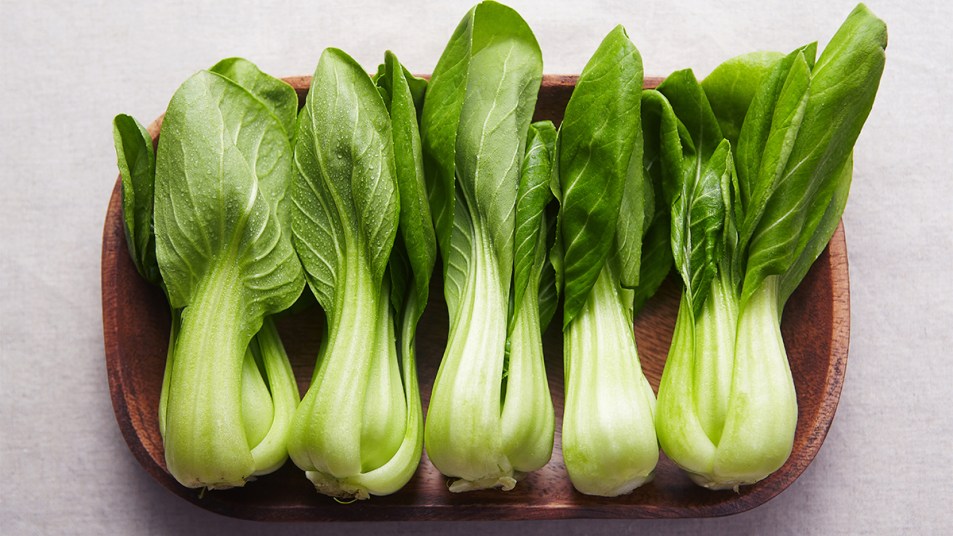This Tasty Vegetable Can Help Protect Your Vision, Boost Bone Health, and Control Your Blood Sugar

From the time we are toddlers to our golden years, we are constantly told how important it is to eat our vegetables. But as much as we appreciate all that getting our greens does for our health, sometimes we just can’t look at another side of broccoli! If you’re hoping to mix it up when it comes your vegetable intake, we recommend checking out bok choy. The cruciferous cousin to broccoli, cauliflower, and kale is chock full of minerals and vitamins and can help balance your blood sugar, keep your vision sharp, and boost your bone health. Plus, it tastes refreshingly delicious!
Bok choy, also known as Chinese cabbage, was first introduced to the U.S. in the 19th century, however, its popularity in China dates back much further. Archeologists have found 6,000-year-old cabbage seeds in the Yellow River Valley! These days it’s a staple ingredient in many dishes within Chinese cuisine, and is readily available in the produce section of the grocery store and at farmer’s markets.
Healthline reports that one cup of shredded bok choy is a great source of key nutrients like vitamin C and K — and is only 9 calories! Vitamin C is not only vital to your immune system but it also helps produce collagen, a protein necessary to repair damaged or weakened muscles. In addition to your muscles, collagen is prevalent in other areas of the body such as tendons, ligaments, and skin. You’ve probably heard about its complexion boosting abilities!
As for Vitamin K, it plays a part in increasing the density of your bones to reduce the chances of a fracture. The good news is you’ll get about 27 percent of your daily value of this vitamin by eating one serving of bok choy.
Due to its low glycemic index, the American Diabetes Association considers bok choy a non-starchy vegetable, which makes it great for controlling your blood sugar. Eating bok choy will prevent blood sugar spikes while satisfying your appetite because your body will slowly digest and absorb it. They recommend eating at least three to five servings — 1/2 cup cooked or one cup raw — of non-starchy vegetables a day. This will not only keep your blood sugar under control, but also curb unnecessary cravings between meals.
Maintaining your eye health is super important especially as you age. Luckily, simple diet tweaks like consuming more bok choy can keep your vision sharp as it contains antioxidants like beta-carotene (also found in carrots) and lutein which can lower your risk of developing an age-related eye disease. It also has vitamin A, another nutrient linked to eye protection. It helps produce certain pigments so that your retina can function properly, along with providing moisture and nourishment to parts of your eyes including the cornea.
Aside from the health benefits, bok choy really stands out on its own because it has a slightly sweeter taste than other types of Chinese cabbage. Also, when you’re cooking with it you’ll notice the difference in texture: the green leaves at the top will become wilted and the rest of the vegetable will have a slight crunch, but should still be tender enough to chew.
One of the easiest ways to cook bok choy is to stir-fry it. The experts at The Spruce Eats suggest first separating the leaves and chopping any large pieces into bite-size chunks. Next, heat a skillet over high heat and pour enough olive or vegetable oil to coat the bottom of the pan. Then, add the bok choy and cook for about three minutes if you want it to still be a little crisp after cooking or up to eight minutes for fully cooked and browned leaves.
You can also eat it raw with other items like carrots, apples, and nuts for a crunchy salad. Epicurious notes that bok choy’s qualities for providing contrasting textures and mild flavor make it a great vegetable to enjoy its uncooked form. They recommend finely chopping it first so that it’s manageable to eat with a fork. Then, toss with the other ingredients and add the dressing or vinaigrette of your choice.
So whether you shred and mix it with other ingredients for a refreshing salad or use it for your next stir-fry, there’s so many ways to add bok choy to your daily diet to benefit your health!
This article originally appeared on our sister site, First For Women.












